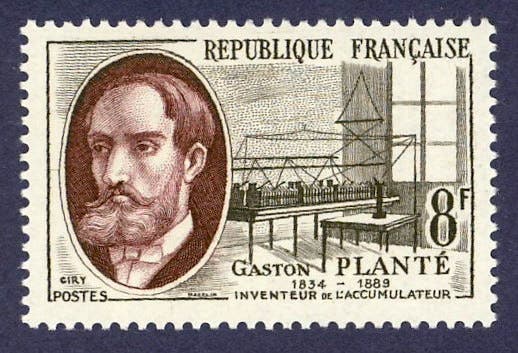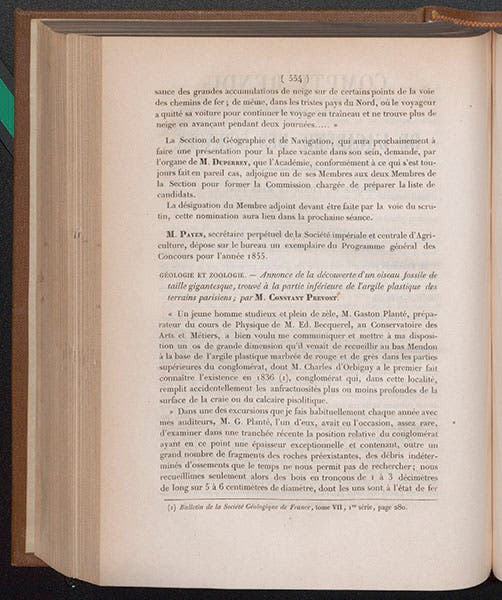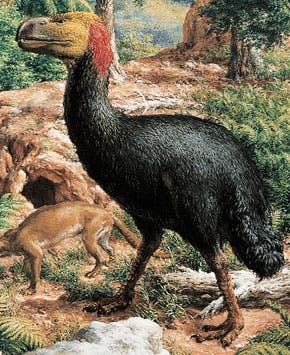Scientist of the Day - Gaston Planté
Gaston Planté, a French physicist, was born Apr. 22, 1834. Plante has the very rare distinction of having made important discoveries in two entirely unrelated fields. In 1859, he invented the lead-acid battery. The battery had been around since 1800, when Volta put together his first "Voltaic pile," but Planté's battery was the first battery that could be recharged, and it would become a staple for automobiles when they were subsequently invented. There is an original Planté battery in the Science Museum in London (first image). It consists of 20 separate cells; each cell is a thin sheet of lead, rolled up around some lead peroxide, with dilute sulfuric acid as the electrolyte. An elaborate switch at the top allows the cells to be switched from parallel to series. There is a picture of another Planté cell (and of Planté himself) on a French postage stamp of 1957 (second image).
It is not surprising that a physicist might invent a new kind of battery. But it is very unusual that a physicist would have been the one to discover an important new fossil. When Planté was just 21 years old, he served as the lecture assistant in Paris to the physicist Alexandre Becquerel, father of the man (Henri) who would later discover radioactivity in uranium. In 1855, in the course of his duties, Planté was looking at some rock strata from the Paris Basin, when he found the fossil bones of what appeared to be a gigantic flightless bird – as big as an ostrich, but stockier. There was no skull, but the rest of the skeleton was well represented.
The bones were turned over to Constant Prévost, the geologist at the French Academy of Sciences, and Prévost described the new bird in a paper in the Comptes Rendus of the Academy in 1855 (third image). At the end of his short 4-page paper, he named the new find after the young physicist, calling it Gastornis pariesiensis (fourth image).
Twenty years later, the fossils of a similar bird were found in the American West, this time including a massive skull like a huge snapping turtle. This was clearly a predatory bird; it was named Diatryma and referred to as a “terror bird.” When Rudolph Zallinger painted his mural, The Age of Mammals, for the Peabody Museum at Yale University in 1967, he included a very colorful Diatryma besieging an Eohippus (now called Hyracotherium), an ancestral horse much smaller than the giant bird.
Specialists have since discovered that Diatryma and Gastornis were in fact the same creature, and because Gastornis was named first, that name has precedence. So Zallinger’s Diatryma is now a Gastornis. When the BBC made the film Walking with Beasts in 2001, they included a scene of Gastornis besieging a poor “dawn horse” and shaking the life out of him. Watch only if you are OK with the idea of a bird catching and eating a horse. But the animation does give one a good sense of the terror that Planté’s bird must have brought to the Eocene epoch, 50 million years ago.
Dr. William B. Ashworth, Jr., Consultant for the History of Science, Linda Hall Library and Associate Professor, Department of History, University of Missouri-Kansas City. Comments or corrections are welcome; please direct to ashworthw@umkc.edu.










